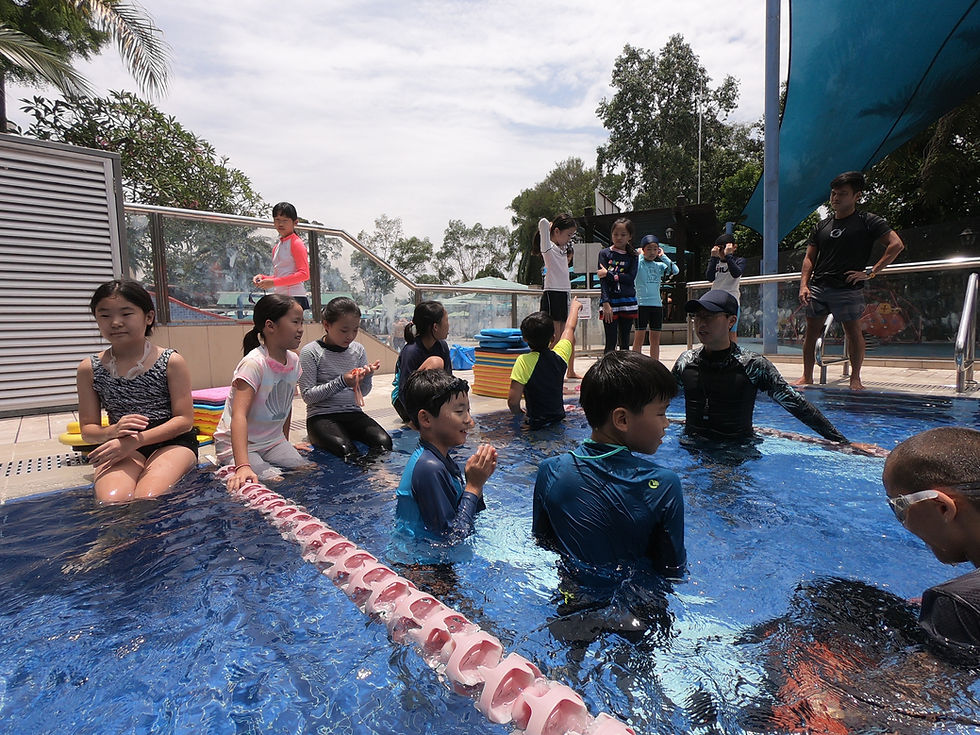Mastering Arm Movements for Little Swimmers
- SG Sink Or Swim

- Aug 13
- 2 min read

Teaching young children to swim is more than just helping them stay afloat — it’s about giving them the building blocks for proper stroke technique early on. One of the most important foundations is mastering arm movements. Whether your goal is to prepare your child for competitive swimming or simply ensure they move efficiently and safely in the water, arm movement training is key.
In this guide, we’ll break down why arm movements matter, how to teach them effectively, and fun drills to make learning engaging for little swimmers.
🏊 Why Arm Movements Are Crucial for Young Swimmers
Proper arm technique helps children:
Generate propulsion without over-relying on kicking.
Develop coordination between arms, breathing, and body rotation.
Prevent bad habits like crossing over or pulling too wide.
Build confidence as they see tangible improvement in speed and ease of swimming.
Starting early helps kids form muscle memory, making future stroke development smoother.
🧠 Key Principles for Teaching Arm Movements
1. One Stroke at a Time
Focus on a single stroke — like front crawl or backstroke — before introducing multiple styles. Kids learn faster when movements are broken into smaller, repeatable actions.
2. Demonstration is Powerful
Children often learn by watching. Demonstrate both in and out of the water, then let them mimic slowly before increasing speed.
3. Hand Position Matters
Encourage a relaxed hand with fingers together, angled slightly to “catch” the water. This maximizes pulling power while avoiding wasted effort.
4. Timing and Coordination
Work on the rhythm of the stroke — especially for younger swimmers who tend to pause mid-movement. Use verbal cues like “reach–pull–recover” to guide timing.
🎯 Fun Drills for Mastering Arm Movements
A. Doggy Paddle Progression
Start with a simple head-above-water paddle.
Gradually extend arms further forward each stroke.
Helps build a smooth reach-and-pull motion.
B. Streamline Push-Off & Pull
Have the swimmer push off the wall in a streamlined position.
Take 3–5 arm pulls before stopping.
Focuses on powerful pulls and body alignment.
C. Bucket Pull Game
Use a small float or toy in front of the swimmer.
Encourage them to “pull” themselves toward it using only arms.
Makes pulling stronger while keeping learning playful.
D. Mirror Swimming
Stand in shallow water and “mirror” the child’s arm movements.
Switch roles so they lead — boosting confidence and memory.
💡 Tips for Success
Keep practice sessions short and fun for better retention.
Use positive reinforcement (“Great reach!”) to encourage correct form.
Progress gradually from shallow to deeper water.
Pair arm movement training with kickboard drills to isolate the arms.
🌊 Conclusion
Mastering arm movements early gives little swimmers a head start in technique, efficiency, and confidence. By keeping lessons playful and focused on form, children not only improve faster but also develop a love for the water.
With patience, practice, and encouragement, these small steps will lead to strong, well-coordinated strokes — the perfect foundation for a lifetime of swimming success.





Comments